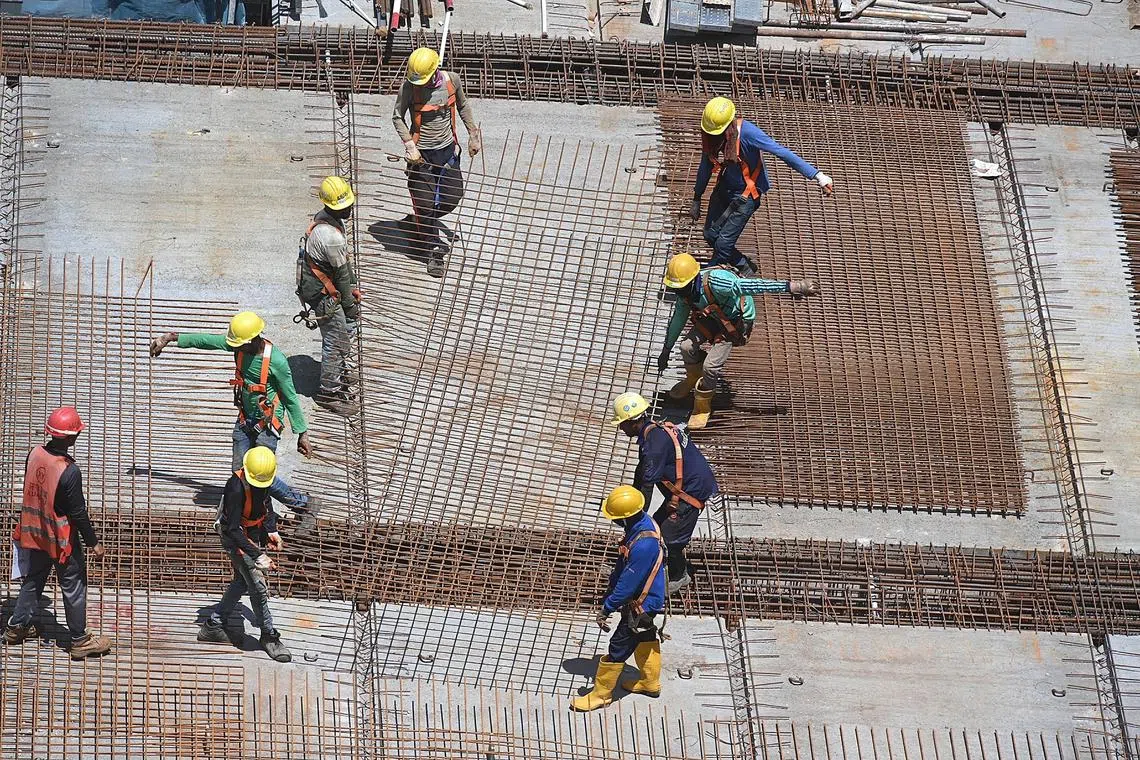NUS scientist wants to expand research to help vulnerable groups in S’pore, S-E Asia beat the heat
Sign up now: Get ST's newsletters delivered to your inbox

Associate Professor Jason Lee said that he hopes to help more people, such as those who work outdoors, platform workers and children, beat the heat.
ST PHOTO: LIM YAOHUI
Follow topic:
- Heat expert Jason Lee is focusing on heat risks for vulnerable groups like construction workers, delivery riders, and hospital patients.
- Singapore is addressing rising temperatures with national heat advisories, heatwave response plans (cooling centres, home-based learning), and heat-reflective paint on HDB blocks by 2030.
- Prof Lee's Heat Resilience and Performance Centre is a UN hub, aiming to improve heatwave warnings and potentially certify cooling gadgets globally; he envisions advanced cooling solutions.
AI generated
SINGAPORE - Years of record-breaking temperatures and severe heatwaves have made heat an issue that governments around the world are increasingly paying attention to.
Singapore, for example, has rolled out a national heat advisory as well as heatwave response plans
But one Singapore scientist, who has advised the Government on some of these national policies, is now expanding his research focus to include more vulnerable groups here and in the broader South-east Asian region.
Associate Professor Jason Lee, who is the director of NUS’ Heat Resilience and Performance Centre, told The Straits Times that he hopes to help more people, such as those who work outdoors, platform workers and children, beat the heat. Key to these efforts is to help these groups cope with the rising mercury without over-reliance on air-conditioning, he added.
Heat in the region is unlike anywhere else, due to the dangerous combination of high humidity and scorching temperatures. This makes it hard for sweat – the body’s natural cooling mechanism – to evaporate from the skin.
“Air-conditioning has revolutionised comfort, but its environmental footprint requires us to be careful about where it is deployed,” said Prof Lee, 47.
“Prioritising vulnerable populations and adopting complementary cooling strategies, such as fan-assisted ventilation, can promote more sustainable thermal management practices.”
He leads Project HeatSafe, which brings together several studies and fieldwork by NUS researchers and partners to investigate how rising temperatures affect the health and productivity of people here and in the region.
For example, a survey of outdoor worksites in 2022 found that workers were exposed to high heat stress conditions several times in the year. A study under the project also found that exposure to humid heat has taken a toll on productivity and even fertility and pregnancy outcomes.
One of his research priorities in Singapore going forward is to find out how heat stress affects the health and productivity of delivery riders, schoolchildren and patients in hospital wards with no air-conditioning.
His team has also been monitoring workers’ sleep quality in dormitories, as warmer nights will become more common.
“Until recent years, heat stress was perceived as a challenge mainly for our soldiers and firefighters. I’m glad that there is greater awareness that heat is a whole-of-government issue,” said Prof Lee, who is also deputy chair of the NUS Human Potential Translational Research Programme.

A survey of outdoor worksites in 2022 found that workers were exposed to high heat stress conditions several times in the year.
PHOTO: ST FILE
He is also working with Duke-NUS Medical School to combine climate data with hospital records to analyse the relationship between climate and health. The findings will be used to forecast future climate-health impacts here.
“Often, existing conditions like cardio-respiratory issues can be worsened by heat. There is a significant under-representation of heat-induced diagnoses,” he said.
Prof Lee, whose work is also gaining recognition globally, said he hopes to expand research on heat to the broader region.
In January, his centre was appointed the South-east Asia hub of the UN-backed Global Heat Health Information Network. Comprising experts, government officials and humanitarian actors, the hub aims to prepare for and protect the region from the health impacts of extreme heat.
One of the hub’s first deliverables is to assess each country’s heatwave warning systems and response plans to further enhance them.
Globally, early warning tends to rely on weather and temperature thresholds. Prof Lee hopes they can be improved by making warnings more personalised to each individual. This could include apps that note down a person’s location, attire and physiology, for example.
The Saudi Arabian authorities in May also entered a partnership with the centre to develop solutions to protect outdoor workers from increasing heat risks in the Middle East – especially as the kingdom has major infrastructure projects under way.
Prof Lee said that across South-east Asia, the heat crisis could be exacerbated by other disasters.

He cited the 7.7-magnitude earthquake that rattled Myanmar in March,
He said that victims not only lost their homes but also had to grapple with intense heat in makeshift shelters.
Remotely, Prof Lee advised several disaster relief staff on ways to prevent heat stress in victims and first responders.
He added: “For example, emergency hydration might need to be hastened compared with non-heat periods. We need to increasingly consider heat threats even in disaster response.”
A key part of Prof Lee’s research also looks into the impacts of potential solutions to help people deal with the heat before they succumb to heat illnesses.
Platform workers, who do not have fixed salaries and are paid for every delivery they make, often push themselves to take on more jobs in a day.
This runs the risk of them getting heat injuries and accidents, said Prof Lee.
One potential solution that could help prevent these workers from working on extremely hot days is parametric insurance, he said. This refers to an emerging financial instrument that triggers a payout if temperatures or other environmental factors exceed a certain threshold.
Another potential solution that Prof Lee said he dreams about is to create fabrics that are naturally cooling – such as T-shirts woven with nanomaterials, or tiny particles, that can repel humidity.
He explained: “Even in the humidity, your immediate micro-environment would be dry because the nano-materials are pushing the muggy air away from you, allowing sweat to be fully evaporated and keep us cool.
“Imagine how good it will feel, living in Singapore.”


